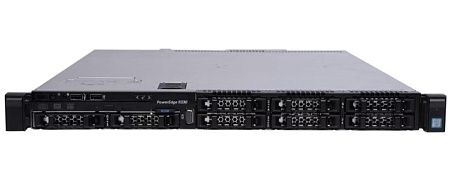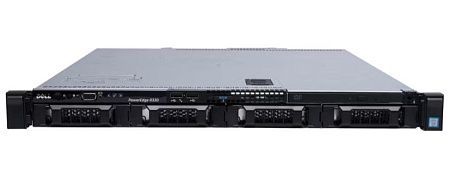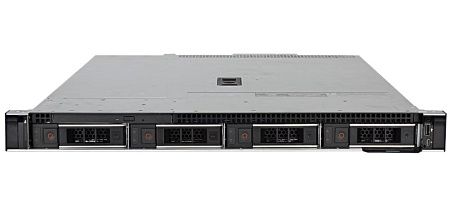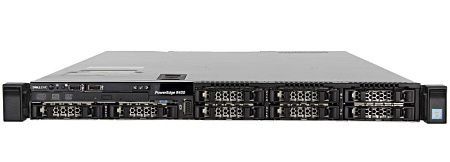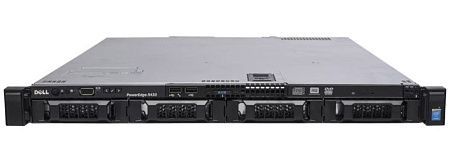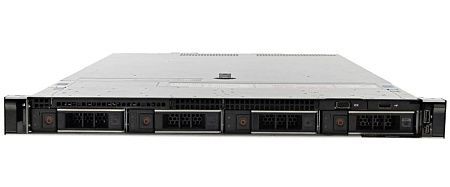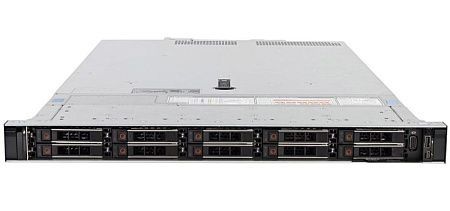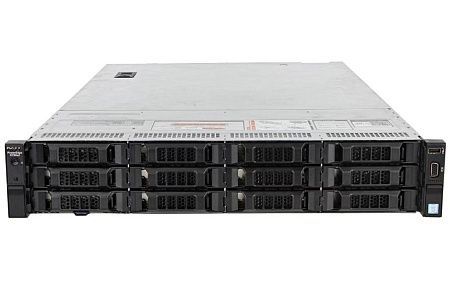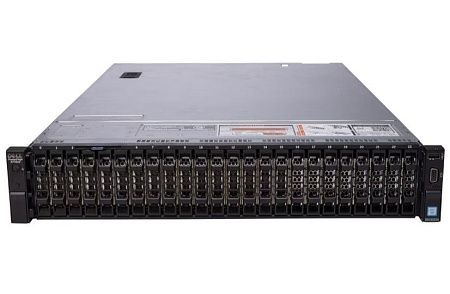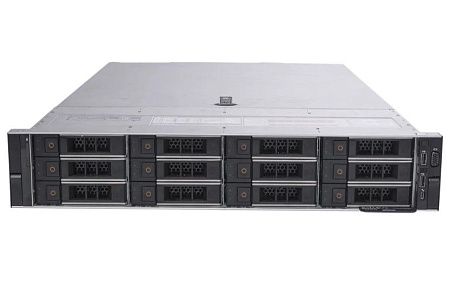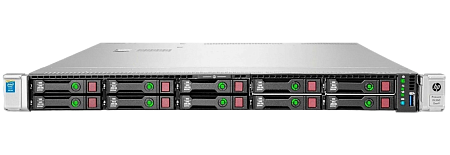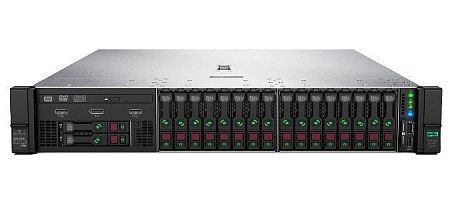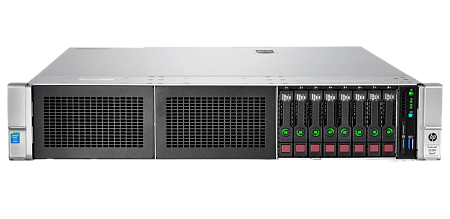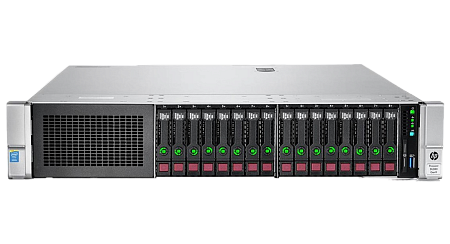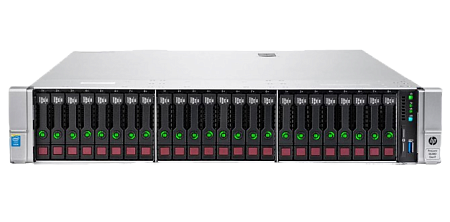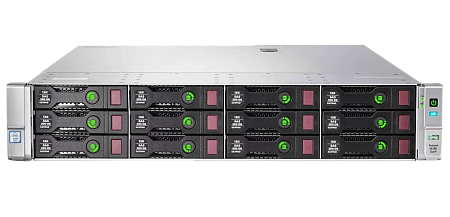VMware ESXi is a next-generation hypervisor that is independent of the operating systems and that is make it easy to deploy the solutions for virtualization.
This software product provides high security, reliability and manageability of the virtual machines created on the physical servers and used to run the resource-intensive applications or the data centers, ERP and CRM systems.
The popularity of VMware ESXi is due to its functionality and uniqueness in their segment, stability, scalability and ease of migration from the physical servers. In addition, this hypervisor is available in a free version, as well as a system built into the server hardware.
VMware ESXi Features
VMware ESXi has a wide range of features with 150 MB of a disk space, including:
- stable performance. The hypervisor supports the applications of any size with the ability to deploy the powerful virtual machines (up to 128 vCPUs, 6 TB of RAM, and 120 devices) for meeting the needs of the different applications. In this case, for each specific solution, it is necessary to take into account the limiting configuration parameters;
- increased security. VMware ESXi has a powerful encryption system to protect sensitive data with the virtual machines. It’s also restrict an access for a streamline administration, expand auditing and logging capabilities to create more transparent reporting and simplify the retrospective analysis;
- ecosystem efficiency. VMware ESXi provides support for OEMs, for the technology partners, for the applications and for the guest operating systems;
- comfort of the working conditions. To support day-to-day administration, VMware ESXi features a modern, integrated HTML5 standards-based interface, while VMware uses the vSphere CLI and developer-friendly REST-based APIs to automate processes. The vSphere CLI command line interface is also available, allowing to run the basic administrative commands from any computer with network access to the system.
ESXi is a “type one” hypervisor installing directly on a physical server and through direct access efficiently allocating the hardware resources for consolidation the used software.
VMware ESXi used in technology of the virtual graphics processors (vGPU) frequently, where the users could run the "heavy" applications remotely, such as AutoCAD, 3DS Max, Maya, Sony Vegas Pro.
Also, the virtual storage systems were developed on the basis of this product: vSAN. The structure allows achieving maximum I / O performance, NSX, increasing the speed, adaptability and security of the network, VMware Horizon - hyper-converted. That combines all elements of a traditional data center (storage , computing resources, networks and controls) infrastructure.
Comparison the different versions of ESXi
Comparison the performance characteristics of the different versions of ESXi could be presented in the form of a table.
| Characteristic | ESXi 5.5 and later | ESXi 5.1 and later | ESXi 5.0 | ESX/ESXi 4.x and later | ESX/ESXi 3.5 and later |
| Hardware version | 10 | 9 | 8 | 7 | 4 |
| Maximum Memory (GB) | 1011 | 1011 | 1011 | 255 | 64 |
| Maximum number of processors per VM (vCPU) | 64 | 64 | 32 | 8 | 4 |
| Maximum cores per socket | 64 | 64 | 32 | 8 | 1 |
| Maximum number of SCSI adapters | 4 | 4 | 4 | 4 | 4 |
| Bus Logic Adapters | Y | Y | Y | Y | Y |
| LSI Logic Adapters | Y | Y | Y | Y | Y |
| LSI Logic SAS adapters | Y | Y | Y | Y | N |
| VMware Paravirtualization Controllers | Y | Y | Y | Y | N |
| SATA controllers | Y | Y | Y | Y | N |
| Virtual machine disks | Y | Y | Y | Y | Y |
| Pass-Through SCSI Interface | Y | Y | Y | Y | Y |
| SCSI Hot Swap Device | Y | Y | Y | Y | Y |
| Nodes tools for IDE | Y | Y | Y | Y | Y |
| IDE virtual disk | Y | Y | Y | Y | N |
| IDE drive emulator | Y | Y | Y | Y | Y |
| IDE hot swap device | N | N | N | N | N |
| Maximum NICs | 10 | 10 | 10 | 10 | 4 |
| PCNet32 | Y | Y | Y | Y | Y |
| VMXNet | Y | Y | Y | Y | Y |
| VMXNet2 | Y | Y | Y | Y | Y |
| VMXNet3 | Y | Y | Y | Y | N |
| E1000 | Y | Y | Y | Y | Y |
| E1000e | Y | Y | Y | Y | N |
| USB 1.x and 2.0 | Y | Y | Y | Y | N |
| USB 3.0 | Y | Y | Y | Y | N |
| Maximum graphics card memory (KB) | 524288 | 524288 | 131072 | 131072 | 131072 |
| SVGA displays | 10 | 10 | 10 | 10 | 1 |
| SVGA 3D hardware acceleration | Y | Y | Y | Y | N |
| Interface for information exchange between VM and host OS (VMCI) | Y | Y | Y | Y | N |
| PCI passthrough | 6 | 6 | 6 | 6 | 0 |
| PCI hot swap device | Y | Y | Y | Y | N |
| Forwarding hardware virtualization into a virtual machine (Nested HV support) | Y | Y | N | N | N |
| vPMC support | Y | Y | N | N | N |
| Serial ports | 4 | 4 | 4 | 4 | 4 |
| Parallel ports | 3 | 3 | 3 | 3 | 3 |
| Floppy drives | 2 | 2 | 2 | 2 | 2 |
The maximum number of the processors in a VM (vCPU) depends not only on the virtual hardware version but also on the hypervisor edition (Std/Ent) and on a number of the logical processors on the host.
For better performance and stability of ESXi hypervisor, the new versions of VMware vSphere - 6.5, 6.7, 7.0, recently released by VMware, will be the best use cases. At the same time, VMware vSphere 6.7 is the most popular.
The maximum of the configurations (VMs and ESXi hosts) VMware vSphere 6.5 and 6.7 could be compared in the form of a table:
| Max values | vSphere 6.5 | vSphere 6.7 |
| Persistent Memory - NVDIMM controllers per VM | N/A | 1 |
| Persistent Memory - Non-volatile memory for one VM | N/A | 1024 GB |
| SCSI virtual targets per virtual SCSI adapter | 15 | 64 |
| SCSI virtual targets per virtual machine | 60 | 256 |
| Virtual RDMA adapters per virtual machine | N/A | 1 |
| Virtual CPUs per virtual machine (for Fault Tolerance) | 4 | 8 |
| Maximum memory per virtual machine (for Fault Tolerance) | 64 GB | 128 GB |
| Logical CPUs per host | 576 | 768 |
| Maximum memory for ESXi Host Persistent Memory (Non-volatile memory per ESXi host) | N/A | 1 TB |
| Maximum memory per host | 12 TB | 16 TB |
| Number of Fiber Channel paths per host | 2048 | 4096 |
| Shared VMFS volumes per host | 512 | 1024 |
| Number of LUNs per server | 512 | 1024 |
| Number of physical iSCSI paths per server | 2048 | 4096 |
| Number of Fiber Channel LUNs per host | 512 | 1024 |
| Number of PEs (protocol end-points) of Virtual Volumes technology per host | 256 | 512 |
In addition, VMware vSphere 6.7 includes improvements such as Configuration Maximus, Bug Fixes, ESXi Quick Boot, Persistent Memory (PMem).
Performance Comparison the Different Hypervisors
One of the areas the using hypervisors is installation the servers with 1C. At the same time, the performance1C platform will be interconnected with a performance of the virtualization platform. The most popular hypervisor solutions today are Windows 2019 generation Hyper-V, ESXI v7.0.1, KVM, and Windows Server 2019 hardware server based on Intel Xeon Gold series processors.
Comparison a performance of these solutions is carried out according to the Gilev test. This is a synthetic test allowing to evaluate a performance 1C:Enterprise platform. It used to evaluate a performance using a DBMS for storing 1C databases generally, but it can also used for the file version of storing 1C databases.
The results of this test (the performance indexes) presented in the form of a table:
| Hypervisor type | File base | SQL |
| Hardware server | 67 | 41 |
| ESXi | 66 | 41 |
| Hyper-V | 65 | 36 |
| KVM | 62 | 35 |
At the same time, despite almost the same results, the choice between Hyper-V and ESXi is made in favor VMware product. Since Hyper-V hypervisors don’t support the hardware USB port forwarding technology they cannot add CPUs on the fly (they have to be added offline -mode, resulting in downtime) and the number of guest operating systems for Hyper-V is limited.
Compatibility Guide
VMware ESXi is an optimized, tested and certified platform for server virtualization storage, for the operating systems and for the applications with the ability to standardize at the enterprise level.
It designed to run on a rack, on a tower, and on the blade servers from leading hardware vendors: Dell, Fujitsu Siemens, HP, IBM, NEC, Sun Microsystems, and Unisys, as well as to work with the servers meeting Intel White-Box specifications. VMware ESXi physically integrated into the server hardware and the server is ready to work with a virtualization immediately after launch.
The storage systems manufactured by Dell, EMC, EqualLogic, Fujitsu, Fujitsu Siemens, HP, Hitachi Data Systems, IBM, NEC, Network Appliance, StorageTek, Sun Microsystems, 3PAR and other vendors are compatible with VMware ESXi, while VMFS could combine in the volume heterogeneous storage devices.
The cost of ownership of IT environments is reduced by the ability to support VMware ESXi (VMotion and VMware HA) low-cost, easy-to-manage shared storage such as NAS and iSCSI SAN. Centralized management, support for 4GB Fiber Channel SAN, configuration of all VMware ESXi servers are provided by VirtualCenter.
With VMware ESXi 3.5's use of the high-performance networking environments (such as 10 Gigabit Ethernet). It is possible to support the most intensive network workloads. VMware virtual machines work with the applications such as:
- 64-bit guest operating systems;
- operating system Solaris 10;
- ОС Windows Vista;
- Ubuntu guest OS.
Applications are also supported by the web service APIs that are part of the VMware Infrastructure SDK.
There is an opportunity with VMware ESXi to run the virtual machines not only in VMware formats. The free VMware Virtual Machine Importer software allows to run Microsoft® Virtual Server, Virtual PC, and Symantec® LiveState Recovery virtual machines on a VMware ESXi system. It is worth noting that a lot of software vendors make virtual machine templates specifically for VMware ESXi.
Advantages and disadvantages of ESXi
The main advantages of VMware ESXi include:
- the ability to install a free version of VMware ESXi (to use it, its need a license key obtained by registering on the VMware website);
- ease of transition to the VMware vSphere infrastructure (of which VMware ESXi is a component). The transition consists of installing vCenter and rekeying;
- high BM density. ESXi allowing the highest density of BMs on a physical server and saving money with the lowest cost of product life cycle;
- the presence of Memory Overcommitment functions (the hypervisor's ability to allocate more memory to virtual machines than is available on the physical host) and Transparent Page Sharing (more efficient use of the host's RAM);
- a large number of the additional options - Cloud computing, Chargeback of resources, Dynamic Resource Scheduling, High Availability, FT, VMotion and SVMotion, Virtualization Security, Distributed Virtual Switch (dvSwitch), Cisco Nexus 1000V, VMware Data Recovery;
- the possibility of technical support for the product by its manufacturer;
- support for the "Passthrough \ SR-IOV" functionality, allowing to "forward" physical equipment inside the BM.
The main disadvantage of VMware ESXi is the limited functionality of the free version, as well as the need to pay for the additional options. In addition, there may be difficulties with a support of the operating systems. First, the operating system license on each virtual server is subject to payment. Secondly, a limited range of the guest operating systems and their builds are supported.
Installing VMware ESXi on a server requires licensing through the web interface. If this requirement is not met, the trial use of the product will only be possible for 60 days.
If you want to purchase the servers for a virtualization with VMware ESXi hypervisors, please contact our company's specialists. They will select and configure all the necessary server hardware with the required version of the VMware product.
Specialists of our company are ready to help you purchase the server and select the necessary server configuration for any required task.


